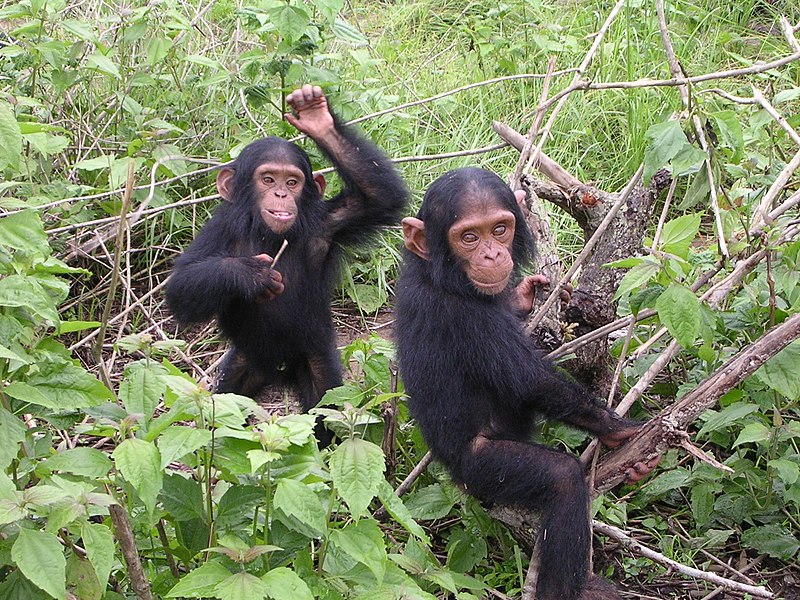One of the key identifying characteristics of humans is our
ability and preference for walking upright on two legs. We tend not to think
much of it in our day to day lives, but bipedalism is rare in the animal kingdom;
only primates are capable of it and among primates only humans are bipedal to
the exclusion of all else. But why did humans and other primates develop even
limited bipedalism? Other mammals exist without it fairly well. There have
doubtlessly been many theories about this trait, two are discussed below.
One theory that might explain human bipedalism is the load
carrying theory. This is the theory that hominid ancestor evolved to move
upright as a method of carrying loads (such as offspring) in a more efficient
manner. However, studies of human load
carrying show that an unbalanced load, such as a small child, create more
strain on our bipedalism than balanced loads. That is, carrying children
creates enough stress that moving to bipedalism to carry the children was unlikely
to have been driven by that being an efficient method of carry. Unless there
was an environmental pressure for children to be carried in the arms, leaving
only the legs free to move hominids forward, load carrying likely did not
affect the evolution of bipedalism.

An overflowing source of information regarding the evolution
of traits is often the current traits of closely related species. By studying
when extant (existing) apes use two limbs to stand and move rather than four
limbs, potential evolutionary pressures from bipedalism can be discovered and
analyzed for validity. Chimpanzees have been observed to use only two limbs
when foraging for fruit from trees. Often a grasping hand on a higher branch
served as a stabilizing force for the bipedalism. It has been suggested that
bipedalism evolved in our hominid ancestors as a method of efficient harvesting
of fruits. In fact, the type of hand, shoulder and torso necessary for tree
hanging (either to stabilize bipedalism or not) were present in the first
hominid species that also had the ability to stand upright. Further evidence
for the foraging theory comes from structure of the hip and limb bones. While
the structure seems to be suitable for standing, movement would have been
faster on four limbs. This hints to locomotion not being behind the development
of bipedalism, but rather a later improvement.
Sources:
Hunt, K. (1994). The evolution of human bipedality: ecology and functional morphology. Journal of Human Evolution. 26(3):183-202. 10.1006/jhev.1994.1011
Wang, W.J., Crompton, R.H., Li, Y. & Gunther, M.M. (2003). Energy transformation during erect and ‘bent-hip, bent-knee’ walking by humans with implications for the evolution of bipedalism. Journal of Human Evolution. 44(5): 563-579. 10.1016/S0047-2484(03)00045-9
Watson, J.C, Payne, R.C., Chamberlain, A.T., Jones, R.K. & Sellers, W.I. (2008). The energetic costs of load-carrying and the evolution of bipedalism. Journal of Human Evolution. 54 (5): 675-683. 10.1016/j.jhevol.2007.10.004
Picture:
Bruyere, Delphine. (2006). Retrieved: 17 April 2012. http://en.wikipedia.org/wiki/File:2006-12-09_Chipanzees_D_Bruyere.JPG
-Rebecca S.
This is really interesting, Rebecca! More effective foraging is certainly an important benefit to walking upright, but do you know if any costs were incurred upon making this transition?
ReplyDeleteCaleb
I've heard that bipedalism is more debilitating to the body, yet, humans have long lifespans, often even before the advent of modern medicine. Why is this? Could it be our ability to form communities and move from the primitive to urban way of life? Also, is a kangaroo considered bipedal?
ReplyDelete